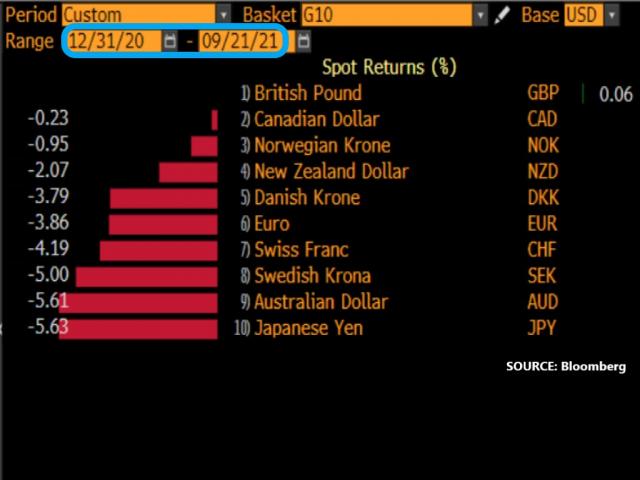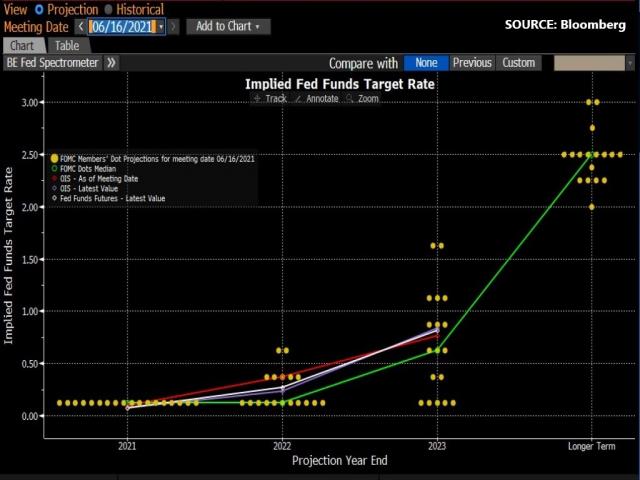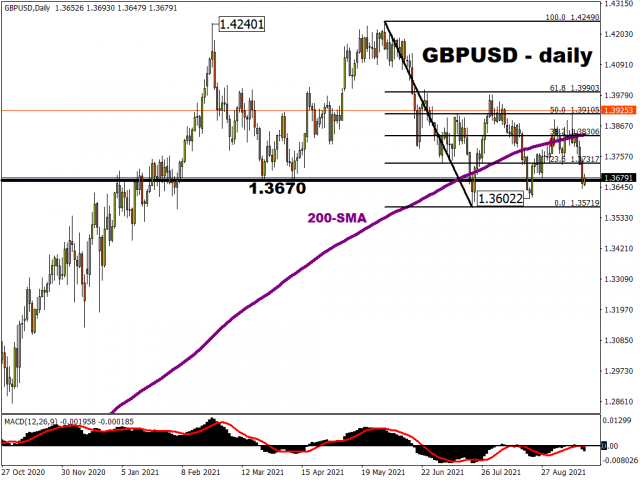GBPUSD is taking centerstage given that two hugely important central banks, the US Federal Reserve and the Bank of England, are set to hold their respective policy meetings this week.
Markets are expected to push higher the currency of whichever central bank that’s perceived to be closer towards moving its policy settings back to pre-pandemic levels.
- Markets are pricing in a 50% chance of a BOE rate hike in March, and 89% chance for a May hike.
- The Fed funds futures are forecasting an 75% chance of a US rate hike only by December 2022.
How has GBPUSD been faring?
At the time of writing, the British Pound is barely hanging on to its year-to-date gain against the US dollar, no thanks to the buck’s climb at the onset of this trading week. Still, it remains the best-performing G10 currency versus the greenback so far in 2021.

The currency pair known as ‘cable’ is currently testing a key support region around 1.3670, which had held resolute in March and April this year. Failure to hold could see immediate support at August’s low of 1.36022, followed by 1.35719 which was the lowest point in cable’s summer declines.
Key days lie ahead
Whether or not GBPUSD will either recover from or falter to those above-mentioned levels could be determined during this timeline:
- Wednesday, 22 September: FOMC policy decision
To be clear, the Fed is not expected to actually make any adjustments to its policy settings this week. However, they are expected to signal that ‘tapering’ is coming (‘tapering’ is the name given to the process of the Fed starting to wind down its $120 billion in monthly asset purchases that have supported the economy since the pandemic).
A strong signal out of the Fed that it’s getting ready to begin its tapering process, probably before year-end, could spell more gains for the US dollar which could then in turn exert downward pressure on the rest of the FX universe.
What to watch out of the FOMC meeting:
- Fed Chair Jerome Powell’s commentary on his policy outlook.
- Economic forecasts through 2024, specifically around inflation.
- Dot plot (which conveys where each FOMC member thinks interest rates would be over the coming years. In June, 7 of 18 members already pencilled in a 2022 hike.)

Overall, elevated projections for consumer prices could mean the Fed has to hike rates sooner than later to get ahead of inflation.
Should such an outlook push more FOMC members into bringing forward their rate hike expectations, along with a Fed Chair that is leaning closer towards his hawkish colleagues, such a combination could bring gains for USD.
- Thursday, 23 September: BOE policy decision
Like the Fed, the Bank of England isn’t likely to make any actual policy changes this week. However, the eight members on the BOE’s Monetary Policy Committee are now evenly split (4-4) on whether the UK economy has recovered sufficiently to meet the central bank’s inflation target.
Should the MPC make a hawkish tilt, that could help trigger a rebound in Sterling currency pairs.
On the other hand, should the MPC lean decidedly dovish, that could see GBPUSD testing key support levels mentioned earlier (around 1.36), depending on how the USD reacts to the FOMC’s decision which will arrive before the BOE has its say.
- Friday, 24 September: Speeches by Powell and other Fed officials
Before the weekend arrives, the attention will be back on the Fed. With markets having had some time to digest the outcomes from the Fed’s mid-week meeting (economic projections, dot plot, Powell’s press conference), markets will be wanting to see what other Fed officials have to say about their respective policy outlooks.
More hawkish rhetoric could keep the US dollar elevated, while a dose of dovishness could unwind recent dollar gains.
How are markets positioned ahead of such important central bank meetings?
- In the week ending 14 Sept, hedge funds have raised their net long positions in Sterling to the highest in a month, reversing a net short position from the week prior.
- As of 14 Sept, asset managers have trimmed their net short positions on GBP for a third consecutive week.
- However, looking at the 25-delta risk reversals, markets are bearish on the pound as well as all G10 currencies (except for the Japanese Yen) versus the US dollar over the next one week, a timeframe which encapsulates both the Fed and BOE meetings.
- Markets are also pricing in more volatility, with one-week implied volatility for GBPUSD rising to its highest levels since May.
In summary, traders and investors will be closely watching what comes out of this week’s policy meetings on either side of the pond, while bracing for bigger moves in GBPUSD.
Disclaimer: The content in this article comprises personal opinions and should not be construed as containing personal and/or other investment advice and/or an offer of and/or solicitation for any transactions in financial instruments and/or a guarantee and/or prediction of future performance. ForexTime (FXTM), its affiliates, agents, directors, officers or employees do not guarantee the accuracy, validity, timeliness or completeness, of any information or data made available and assume no liability as to any loss arising from any investment based on the same.
 Article by ForexTime
Article by ForexTime
ForexTime Ltd (FXTM) is an award winning international online forex broker regulated by CySEC 185/12 www.forextime.com


